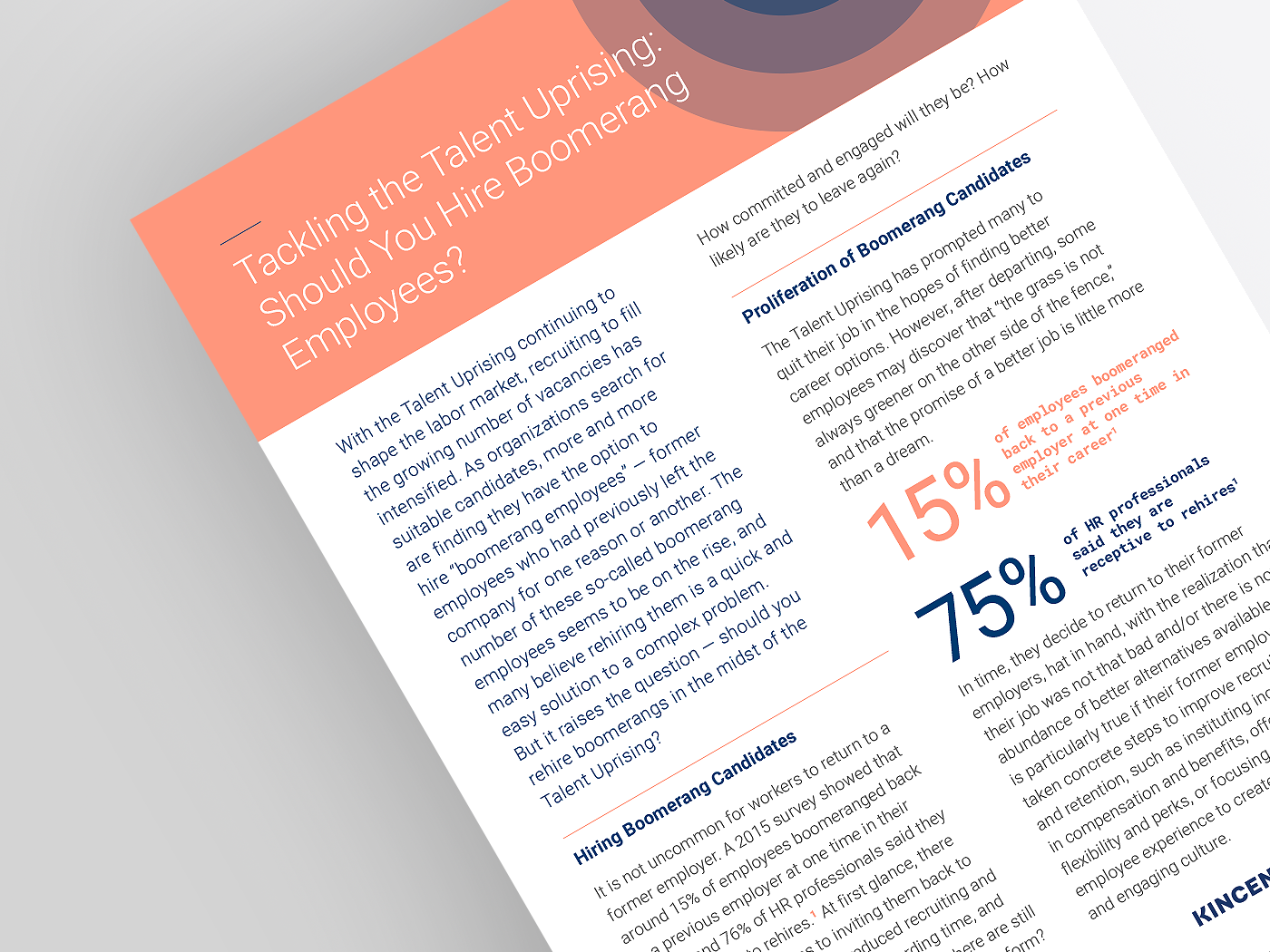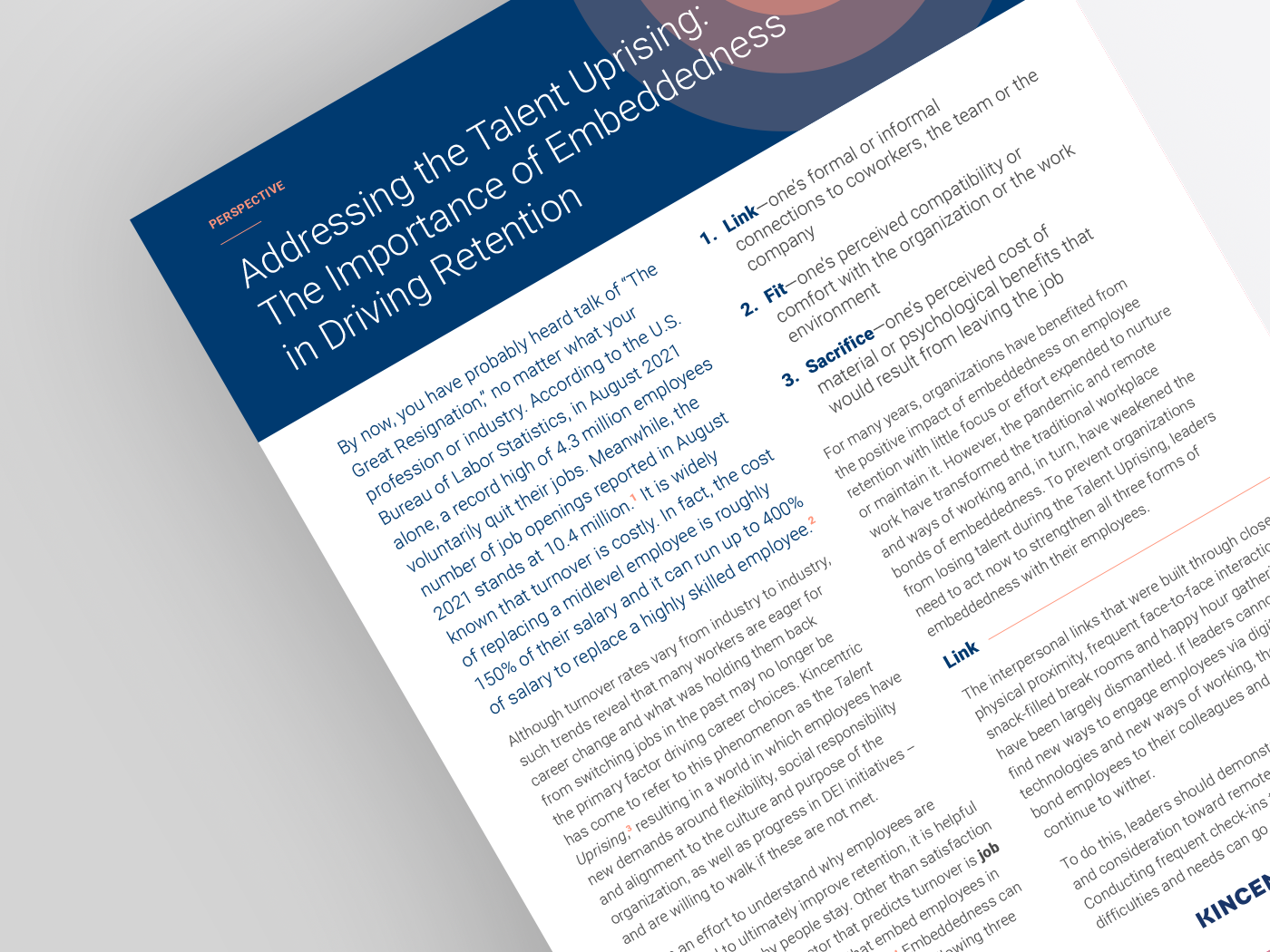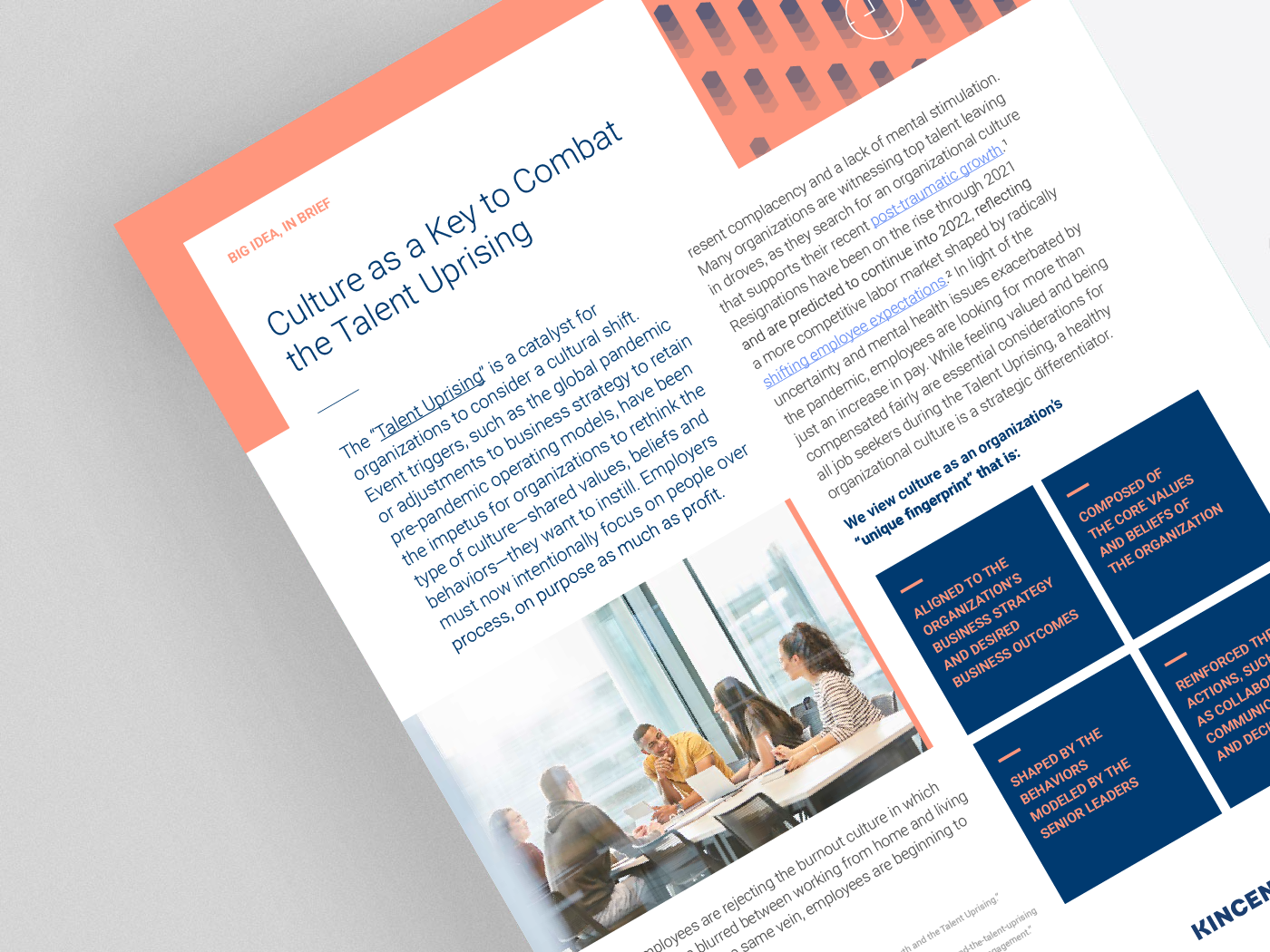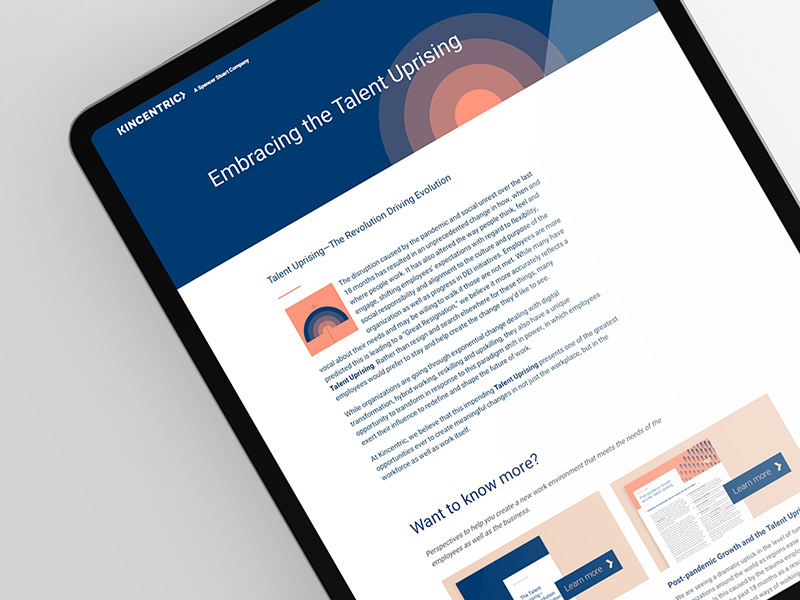
With the Talent Uprising continuing to shape the labor market, recruiting to fill the growing number of vacancies has intensified. As organizations search for suitable candidates, more and more are finding they have the option to hire “boomerang employees” — former employees who had previously left the company for one reason or another. The number of these so-called boomerang employees seems to be on the rise, and many believe rehiring them is a quick and easy solution to a complex problem. But it raises the question — should you rehire boomerangs in the midst of the Talent Uprising?
It is not uncommon for workers to return to a former employer. A 2015 survey showed that around 15% of employees boomeranged back to a previous employer at one time in their career, and 76% of HR professionals said they are receptive to rehires.1 At first glance, there are many advantages to inviting them back to the company: familiarity, reduced recruiting and training costs, shortened onboarding time, and speedy social integration.2 However, there are still many lingering questions: How will they perform? How committed and engaged will they be? How likely are they to leave again?
The Talent Uprising has prompted many to quit their job in the hopes of finding better career options. However, after departing, some employees may discover that “the grass is not always greener on the other side of the fence,” and that the promise of a better job is little more than a dream.
In time, they decide to return to their former employers, hat in hand, with the realization that their job was not that bad and/or there is not an abundance of better alternatives available. This is particularly true if their former employer has taken concrete steps to improve recruitment and retention, such as instituting increases in compensation and benefits, offering more flexibility and perks, or focusing on enhancing the employee experience to create a more appealing and engaging culture.
Other boomerangs may have left their job — either relatively recently or some time ago — for a variety of reasons, including physical or mental health challenges, familial obligations, or retirement, but now wish to return to the workplace. Some may have even deliberately planned their exit with the express purpose of negotiating a better offer upon their return.
Research shows that boomerang candidates tend to be the ones whose previous tenure was relatively short. They most likely left the organization due to an abrupt change — for example, influence from the Talent Uprising phenomenon or increased pressures resulting from the pandemic. It is unlikely that they left due to dissatisfaction developed over time. Therefore, they are more likely to return to the organization than those who had longer tenures (and carefully planned their departure due to dissatisfaction accrued over time).3
Because they came back for better opportunities or with the realization that there are not an abundance of better alternatives available, boomerang employees may return with improved compensation, better appreciation of their former employers, and higher levels of commitment and satisfaction. They are even found to perform more extra-role behaviors, such as offering help even it is outside of their normal job duties and picking up more work that is outside of their job descriptions.4
Moreover, recent research has confirmed that boomerangs perform better than external hires especially when the job requires a high degree of internal interdependence and relational orientation (i.e., the extent to which the job requires cooperation, concern for others and a social orientation). Meanwhile, among the boomerang employees, those who return to work for the same manager and same unit tend to outperform those who did not.5 These findings indicate that their prior knowledge of the job and the social system of the organization and pre-existing social ties are valuable resources that enable the boomerangs to excel.
Other research suggests that rehires perform as well as they had before leaving, and they perform similarly to internal and external hires during their first year back on the job. However, that trend may not hold, and data suggests that external hires may outperform boomerang employees in subsequent years.6 Similarly, rehired managers are more likely to be promoted than internally promoted managers but are less likely to be promoted when compared to external hires.7
Research also shows that those who quit for a second time often quit for the same or similar reason as their first time.8 Thus, companies should be more diligent in conducting exit interviews to identify reasons for turnover before deciding whether or not to hire a boomerang employee.
Given the potential benefits of rehiring boomerang employees, organizations looking to take advantage of this trend should ensure they are setting the stage for the potential to return. Be sure to conduct exit interviews to identify and remedy any issues that may have contributed to an employee’s decision to leave the organization.
Additionally, leaders should make an effort to stay connected with departing employees through alumni communities as well as professional and social networks. Once they are rehired, pay special attention to the onboarding experience of boomerangs. In today’s rapidly changing world, many things may have changed since their previous tour of duty, such as organizational structure, leadership teams, business and people strategies, company mission and vision, and more. Don’t assume that a boomerang can pick up where they left off—invest the time and energy needed for them to be properly reintroduced to the organization.
Rehiring boomerang employees seems like a viable and efficient option, at least in the short term. Employers should not be afraid to hire boomerang employees with the right considerations and expectations, especially given the vacancies, challenges and opportunities presented by the Talent Uprising.
1. The Workforce Institute at Kronos (2015). The Employee Engagement Lifecycle Series. Retrieved from: https://www.businesswire.com/news/home/20150901005843/en/ They%E2%80%99re-Back!-Survey-Reveals-Changing-Mindset-Boomerang#.VebyU7xVhHw
2. Shipp, A. J., Furst‐Holloway, S., Harris, T. B., & Rosen, B. (2014). Gone today but here tomorrow: Extending the unfolding model of turnover to consider boomerang employees. Personnel Psychology, 67, 421–462.
3. Ibid.
4. Snyder, D. G., Stewart, V. R., & Shea, C. T. (2021). Hello again: Managing talent with boo- merang employees. Human Resource Management, 60, 295–312.
5. Keller, J. R., Kehoe, R. R., Bidwell, M. J., Collings, D. G., & Myer, A. (2021). In with the old? Examining when boomerang employees outperform new hires. Academy of Management Journal, 64, 1654–1684.
6. Arnold, J. D., Van Iddekinge, C. H., Campion, M. C., Bauer, T. N., & Campion, M. A. (2021). Welcome back? Job performance and turnover of boomerang employees compared to internal and external hires. Journal of Management, 47, 2198–2225.
7. Ibid.
8. Ibid.



Employees have become more vocal about their needs, and resignations are on the rise, leading to a Talent Uprising, in which employees have a stronger say in dictating the terms of their employment. Organizations must create a new work environment that meets the needs of their employees as well as the business.
Want the latest insights delivered straight to your mailbox?